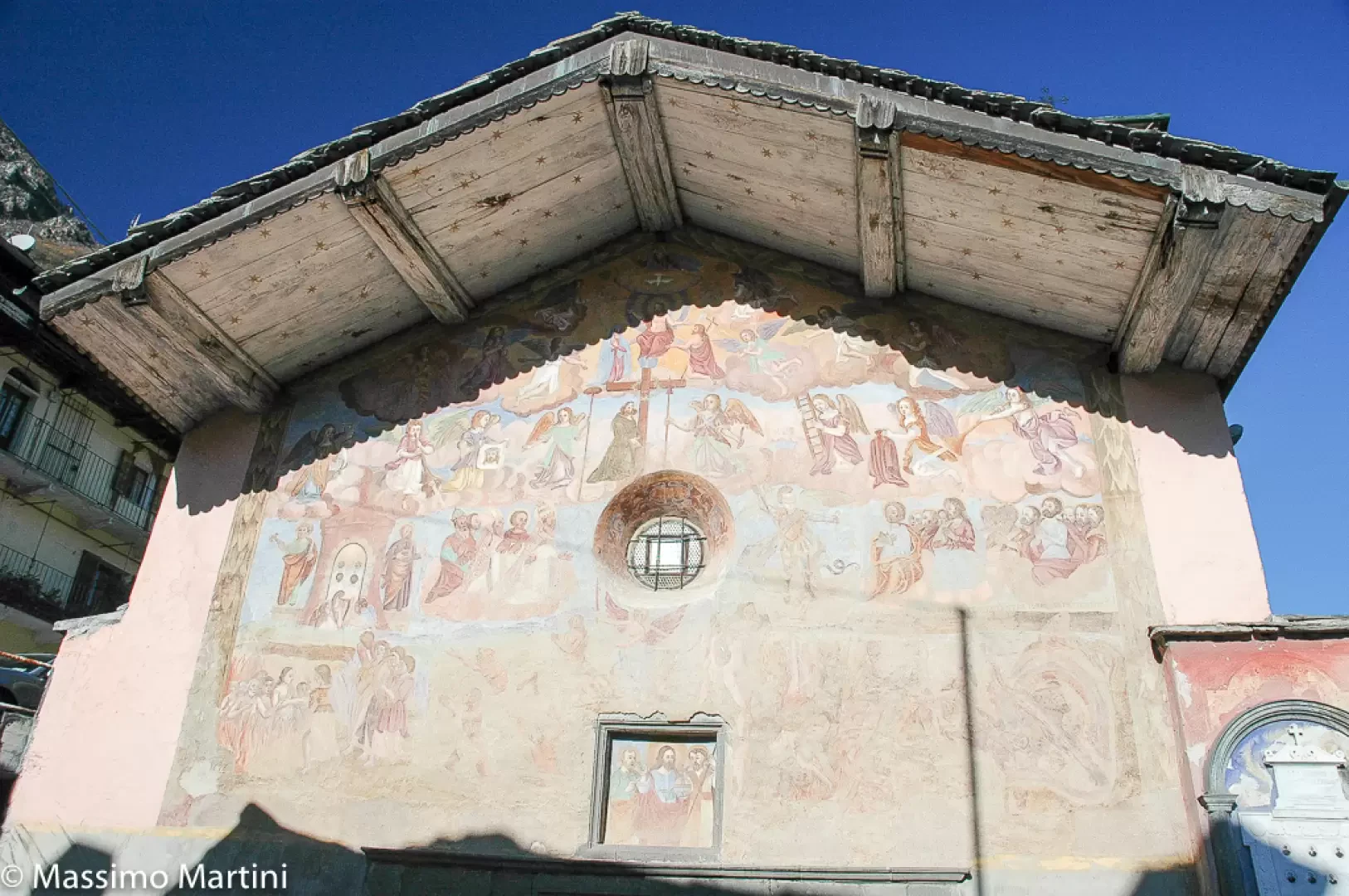Church of the Holy Saviour in Perloz

Introduction
Description
The 17th century church
Built between 1616 and 1620 on the same site as its predecessor, but with a different orientation, the church has remained almost intact to this day.
Its floor plan is rectangular and consists of a single nave with three vaulted ceilings. Its construction has been so well documented that not only all the work phases are known, but also who carried them out and their costs; it is even possible to trace the information about the supply of materials and their processing. If there were no certain data on the period to which the construction dates, it could be assumed that it was erected at the end of the 15th century because it seems to faithfully reproduce the typology of the 15th-century parish churches of Antey and Challand.
The decorations and interior
The main façade is frescoed with a painting depicting the Last Judgement dating back to 1676. This scene also covers the intrados of the roof pitches representing the sky: there are golden stars painted on a white background, but if you look carefully, you can see some blue reflections showing that the background was originally that colour. The stones of the façade are carved to be perfectly square, and in the corner that turns to the path, one can see, looking up, a carved coat of arms in relief protruding from the corner. Also on the main front can be seen another relief carving that appears to be a scroll. In front of the church is a plaque commemorating the fallen of the Second World War. Inside, one can observe the high altar made of black marble with multicoloured inlays from 1786, the balustrade and the pulpit that are made of carved walnut. Beautiful are the panels with statues of St. Bear, St. Grato, St. John the Baptist, St. John the Evangelist and, of course, the Holy Saviour which is positioned in the centre. The reliquary contains a thorn that is supposed to be from the crown of Jesus, brought into the church at the time of the Crusades.
Information
Quota: 648m
Recurrences: -
Web:
In the past, the Church of the Saviour played a very important role because the parish of Perloz encompassed the entire Lys valley. Later on, from the end of the 1100s, autonomous parishes were formed in the neighbouring territories (e.g. Lillianes or Fontainemore).
The date when it was built is not known with certainty, according to some it dates back to 772, but it was probably erected around the year 1000. All that remains of this early settlement is the bell tower (the base of which dates back to the 9th or 10th century but the elevations are more recent) because in the early 1600s it was entirely demolished to make way for the new church.